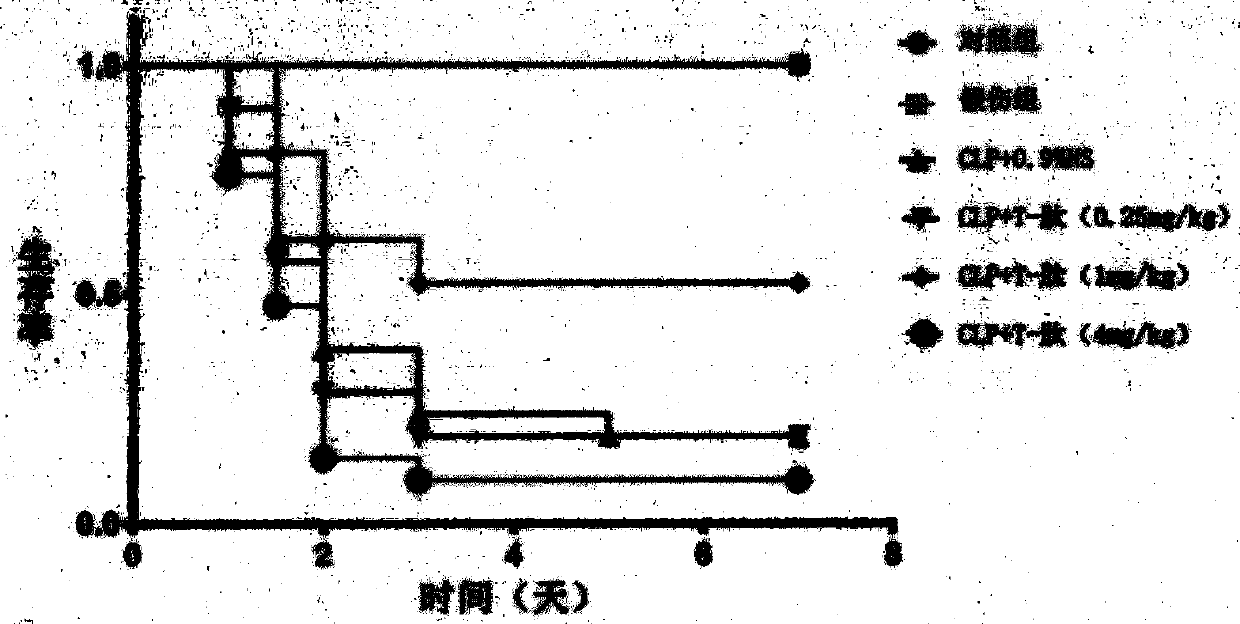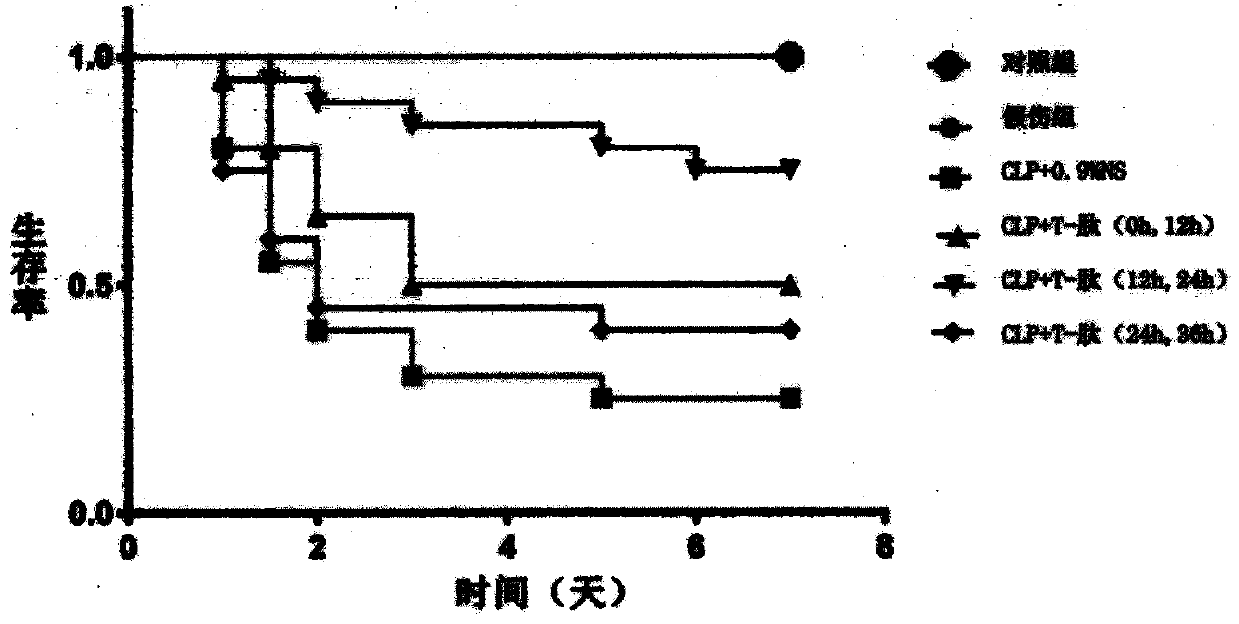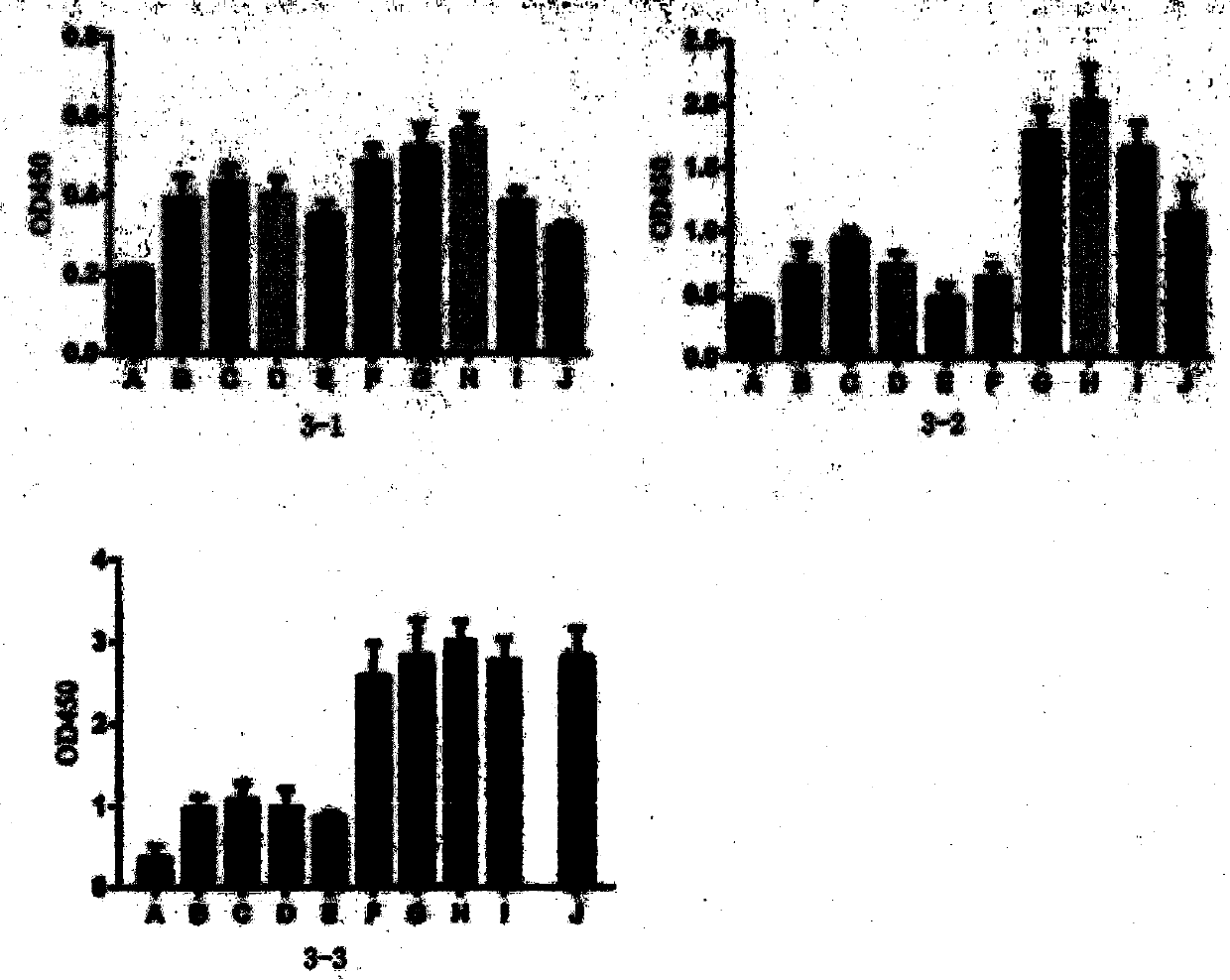A t-peptide immunomodulator for sepsis treatment
A two-way regulation and reagent technology, applied in the field of biomedicine, can solve the problems of increased mortality, inability to clear pathogens, secondary infection of latent viruses, etc.
- Summary
- Abstract
- Description
- Claims
- Application Information
AI Technical Summary
Problems solved by technology
Method used
Image
Examples
Embodiment 1
[0059] Example 1: Effect of T peptide on survival rate of mouse sepsis model
[0060] 1. Experimental animals and main reagents
[0061] Male BALB / c mice, 6-8w, 20+2g, were purchased from the Institute of Experimental Animals, Chinese Academy of Medical Sciences (animal certificate number: SCXK Beijing 2009-0007). Adaptive feeding for 1 week, free access to food and water, room temperature 25°C, 12h circadian rhythm.
[0062] Ketamine Hydrochloride Injection (Shanghai First Biochemical Pharmaceutical Company, China): Sumianxin II Injection (developed by Military Veterinary Research Institute, Academy of Military Medical Sciences, China): 0.9% normal saline (Shandong Luxin Pharmaceutical Group, China) by volume The ratio is 2:2.5:4.5. T-peptide: 1mg / cartridge, ① Dissolve 4mg T-peptide in 10ml of 0.9% normal saline, mix thoroughly, and use it in the 4mg / kg group; kg group; ③Take 2.5ml of the solution in ②, dilute to 10ml, and use it in the 0.25mg / kg group. The corresponding ...
Embodiment 2
[0072] Example 2: Effect of T peptide on the activity of effector T lymphocytes
[0073] 1. Experimental animals and main reagents
[0074] Male BALB / c mice, 6-8w, 20±2g, were purchased from the Institute of Experimental Animals, Chinese Academy of Medical Sciences (animal certificate number: SCXK Beijing 2009-0007). Adaptive feeding for 1 week, free access to food and water, room temperature 25°C, 12h circadian rhythm.
[0075] T-peptide: 1 mg / cartridge, ① Dissolve 1 mg of T-peptide in RPMI-1640 medium (Beijing Suo Laibao Company, China) containing 10% fetal bovine serum (FBS, Hyclone Company, USA), mix well, and use for 100μg / ml group; ②Take 100μl of ① solution and dilute to 1ml for the 10μg / ml group; ③Take 100μl of ② solution and dilute to 1ml for the 1μg / ml group. According to the needs of each group, use RPMI-1640 medium containing 10% fetal bovine serum to further dilute to the required concentration.
[0076] Purified anti-mouse-CD3 / CD28: eBioscience Company, USA: Pr...
Embodiment 3
[0090] Example 3: Effect of T peptide on regulatory T cell activity
[0091] 1. Experimental animals and main reagents
[0092] Male BALB / c mice, 6-8w, 20±2g, were purchased from the Institute of Experimental Animals, Chinese Academy of Medical Sciences (animal certificate number: SCXK Beijing 2009-0007). Adaptive feeding for 1 week, free access to food and water, room temperature 25°C, 12h circadian rhythm.
[0093] T-peptide: 1 mg / branch, ①Dissolve 1 mg of T-peptide in RPMI-1640 medium (Beijing Suo Laibao Company, China) containing 10% fetal bovine serum (FBS, Hyclone Company, U.S.), mix well, and use In the 100μg / ml group; ②take 100μl of the solution of ①, dilute to 1ml, and use it in the 10μg / ml group; ③take 100μl of the solution of ②, dilute to 1ml, and use it in the 1μg / ml group. According to the needs of each group, use RPMI-1640 medium containing 10% fetal bovine serum to further dilute to the required concentration.
[0094] Purified anti-mouse-CD3 / CD28: eBioscienc...
PUM
 Login to View More
Login to View More Abstract
Description
Claims
Application Information
 Login to View More
Login to View More - R&D
- Intellectual Property
- Life Sciences
- Materials
- Tech Scout
- Unparalleled Data Quality
- Higher Quality Content
- 60% Fewer Hallucinations
Browse by: Latest US Patents, China's latest patents, Technical Efficacy Thesaurus, Application Domain, Technology Topic, Popular Technical Reports.
© 2025 PatSnap. All rights reserved.Legal|Privacy policy|Modern Slavery Act Transparency Statement|Sitemap|About US| Contact US: help@patsnap.com



